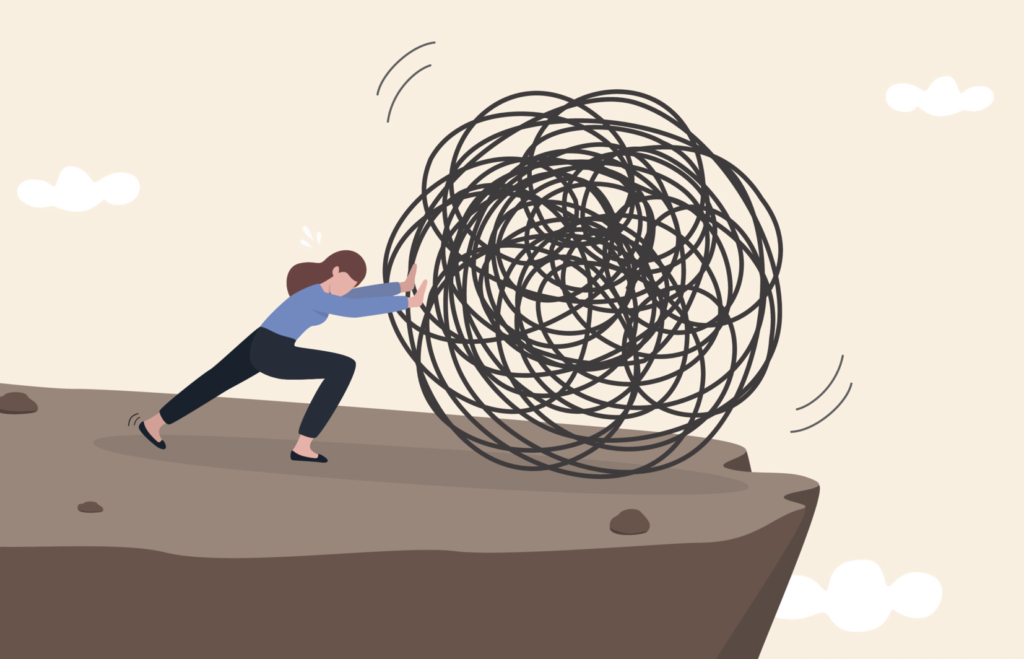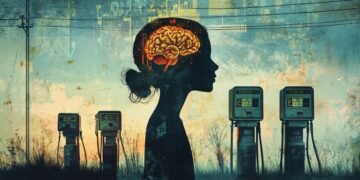Introduction: The Nature of Our Emotions
In the tapestry of human emotions, anger and anxiety are often misinterpreted. They represent the two sides of the same coin, reflecting a state of agitation and unrest. As we explore the nuanced relationship between these two emotions, it becomes evident that understanding their connection can illuminate paths towards emotional healing and resilience.
Anxiety and Anger: Two Sides of a Coin
Research has illuminated that, in many respects, anxiety and anger are intertwined manifestations of the same fundamental emotional experience. Anger can frequently emerge as a façade for repressed anxiety. As psychologist Kaitlin Vogel articulates, both emotions are responses to perceived threats, arising from disturbances within our nervous system.
These disruptions often trigger buried memories or uncomfortable sensations—traumatic childhood experiences or recent negative encounters—that can thrust an otherwise composed individual into a fight-or-flight response. This instinctual reaction is a fundamental aspect of human nature, where anxiety can manifest even in the absence of tangible danger. In safe environments, individuals may still grapple with vague feelings of unease, propelling them into a defensive state of anger.
Understanding the Dynamics of Threat
When faced with perceived threats, individuals may lose control of their emotions. The body releases adrenaline, a key neurochemical associated with the fight-or-flight response. Here, anger can be seen as a chemical form of intensified anxiety, a desperate attempt to regain a sense of equilibrium amidst chaos.
Essentially, when striving to restore harmony within our bodies and emotions, the fiery essence of anger can take center stage. Many people find themselves more inclined to channel anxiety into anger, as the latter provides an illusion of dominance over their unpredictable environments.
Furthermore, the mere thought of a perceived threat can amplify anxiety, triggering further adrenaline release and inciting feelings of anger. Until we learn to shift from our reactive brain (the oldest parts of our nervous system) to our rational mind, we may find ourselves cycling through a loop of heightened anxiety and panic.
The Pain of Anxiety and Anger
Regardless of whether we experience anxiety or anger, the psychological distress often aligns with physical pain. As noted by Dr. David Hanscom, our unsettling beliefs about reality can prompt physiological responses similar to those felt in times of physical threat. Chronic pain and various medical conditions can be traces of unresolved emotional stress.
The constant onslaught of hormones like cortisol may eventually compel our bodies to succumb to their detrimental effects, illustrating the profound connection between emotional turmoil and physical well-being.
Anger: The Illusory Savior of Anxiety
Anger can often be misinterpreted as an artificial solution to the self-shaming brought about by anxiety. Although it may obscure underlying anxiety, it fails to adequately eliminate it. The enormous effort expended to mask negative emotions tends to wreak havoc on our nervous systems.
It can be likened to a choice between dealing with stress constructively or opting for self-protective anger as a means to bury anxiety. This dynamic sheds light on the correlation between anger and obsessive-compulsive disorders, where individuals resort to anger as a substitute for confronting anxiety, making recovery an arduous challenge.
Moreover, when we sever ties with the root causes of our anxiety, we hinder our capacity to effectively manage it. As Hanscom articulates, when anger prevails, blood flow to the rational parts of our brains diminishes, preparing us for confrontations rather than thoughtful engagement. This state can blur our perceptions of others’ needs, paving the way to abusive behaviors.
The Cycle of Anger and Abuse
The connection between anger and abusive behavior often stems from perceived injustice. When individuals believe others have wronged them, they may rationalize their abusive actions as just punishment. In reality, the offender may not have done anything to merit such wrath. Blaming others enables a transition from self-doubt and anxiety to an idealized stance of righteous indignation.
The allure of moral superiority often seems more palatable than experiencing anxiety. Thus, many individuals choose the path of anger in an effort to cope. However, persistently resorting to anger to avoid anxiety can create emotional distance between oneself and others. Such behavior positions individuals in a victim role, subconsciously justifying their actions as self-defense, while inflicting unwarranted anger on those around them.
In summary, anger may serve as a temporary escape from anxiety, yet it often backfires, inflicting equal amounts of pain on oneself and others. This dynamic can unravel personal relationships and catalyze self-destructive behaviors, urging a reevaluation of our emotional responses.

Overcoming Defensive Anger Related to Anxiety
To address and alleviate the anxiety that manifests as anger, individuals may consider the following strategies. While these techniques may require repeated practice or professional guidance, they are essential for fostering emotional resilience.
1. Cultivating Calmness
Begin by exploring methods for self-soothing and relaxation amidst inner turmoil. Slowing your breath is a vital means to facilitate rational thought.
2. Grounding in the Present
Shift your focus inward and outward. Engage with your immediate surroundings through sight, sound, smell, and touch rather than ruminating on past events.
3. Embrace Physical Activity
Incorporating exercise serves to distract and dissipate the nervous energy fueling your anger, promoting overall well-being.
4. Resist Immediate Reactions
Before reacting, assess whether your urge for retaliation will better the situation. If unresolved, it is often best to step away from the immediate context.
5. Replace Negative Habits with Positive Qualities
Strive to infuse qualities such as compassion, forgiveness, and gratitude into your emotional landscape, countering entrenched patterns of denial and blame.
6. Challenge Cynicism and Pessimism
Re-evaluate any negative beliefs stemming from early trauma. This exploration should include confronting and rationalizing uncomfortable past experiences.
7. Focus on Solutions
Rather than fixating on who caused your problems, redirect your energy toward identifying solutions for those issues that incite your anger.
In conclusion, while anger might offer a temporary refuge from anxiety, true tranquility emerges only when we confront and resolve the anxiety that lies beneath. By diving into these emotional depths, we can foster genuine peace and a renewed appreciation for the world around us.











































